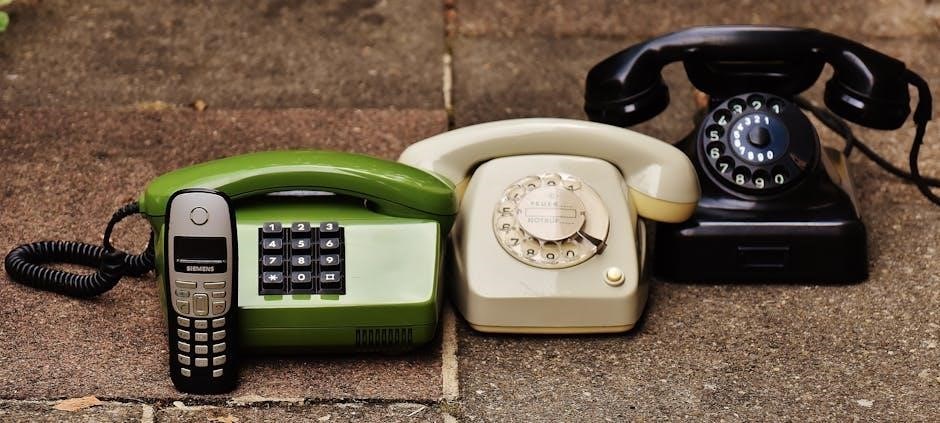Valve guide replacement is a critical process for maintaining engine performance and preventing oil leakage. It ensures proper valve alignment and smooth operation over time.
1.1 Importance of Valve Guides in Engine Performance
Valve guides play a crucial role in engine performance by ensuring proper valve alignment and preventing oil leakage. They maintain the valve’s position, allowing efficient combustion and reducing wear on engine components. Over time, worn guides can lead to poor engine performance and increased oil consumption. Replacing them is essential for restoring engine health and longevity, ensuring smooth operation and optimal power delivery. Properly functioning valve guides are vital for maintaining engine efficiency and preventing costly damage.
1.2 Overview of the Replacement Process
Replacing valve guides involves several methodical steps to ensure accuracy and engine integrity. The process begins with preparing the engine, removing necessary components to access the guides. Old guides are carefully extracted using specialized tools, and new ones are installed, ensuring proper alignment. The procedure requires precision to avoid damage to surrounding components. Once complete, the engine is reassembled, and functionality is tested. This overview provides a clear roadmap for a successful replacement, emphasizing the importance of careful planning and execution.

Tools and Materials Required
- Valve guide remover tool for safe extraction.
- Reaming tool to size new guides accurately.
- New valve guides and necessary gaskets.
- Compressor for valve springs and keepers.
2.1 Essential Tools for the Job
To replace valve guides, you’ll need specialized tools like a valve guide remover and installer. A valve spring compressor is essential for accessing the guides safely. Additionally, a reaming or honing tool ensures the new guides fit precisely. Other necessary tools include wrenches, punches, and a set of engine-specific sockets. A press may also be required for pressing out old guides. Having a cylinder head stand can simplify the process by stabilizing the head during work.
2.2 Materials Needed for Replacement
The materials required for valve guide replacement include new bronze or steel valve guides, valve guide seals, and keepers. Engine oil and silicone RTV are needed for proper sealing. A set of gaskets and O-rings may also be necessary, depending on the engine. A hone brush or reaming tool is essential for sizing the guides accurately. Ensure all materials are compatible with your engine type to maintain performance and durability.
Preparing the Engine
Preparing the engine involves draining the coolant and disconnecting necessary components. Ensure the engine is secure and accessible for the valve guide replacement process, preventing damage to surrounding parts.
3.1 Draining Coolant and Disconnecting Components
Drain the engine coolant to prevent spills during disassembly. Disconnect the battery, hoses, and electrical connectors to ensure safe access to the cylinder head. Remove any components obstructing the valve train. Use drain pans to catch fluids and label disconnected parts for easy reinstallation. Proper preparation minimizes risks of engine damage and ensures a smoother replacement process for the valve guides.
3.2 Removing the Intake Manifold
Removing the intake manifold provides access to the cylinder head and valve train. Use a socket wrench to remove the manifold bolts, working in a star pattern to avoid warping. Disconnect the throttle cable, fuel lines, and coolant hoses connected to the manifold. Carefully lift the manifold off and set it aside. Be prepared for potential spills of coolant or fuel residue. Clean the area to prevent contamination during the valve guide replacement process.
Removing the Cylinder Head
Removing the cylinder head is essential for accessing the valves and guides. Loosen the head bolts gradually, then detach the head from the engine block. Carefully lift it using specialized tools or a hoist to avoid damage. This step provides direct access to the valve train, enabling the replacement of worn-out guides and ensuring proper engine performance.
4.1 Steps to Remove the Head Safely
Begin by loosening the cylinder head bolts in a star pattern to avoid warping the head. Once loose, carefully remove the bolts and any additional hardware. Gently pry the head away from the engine block, taking care not to damage the mating surface. Use a hoist or lifting tool to safely lift the head off the engine. Ensure all components are secured to prevent accidental drops or injuries. This step requires precision and patience to avoid damaging critical engine parts.
4.2 Accessing the Valves and Guides
After removing the cylinder head, use a valve spring compressor to relieve tension on the springs and remove the keepers. Carefully lift the springs and retainers to access the valves. For the guides, employ a specialized valve guide removal tool to extract the old guides without damaging the head. Inspect the area for any debris or residue before preparing to install the new guides, ensuring a clean and precise fit for optimal engine performance.

Extracting Old Valve Guides
Use a specialized valve guide remover to carefully pull out the old guides. Ensure the tool is securely fitted to avoid damaging the engine head.
5.1 Methods for Removing Old Guides

Several methods exist for removing old valve guides, including using a drill press to create a pilot hole for easy extraction or employing a pilot bearing. A Collet-style remover is also effective, ensuring minimal damage to the engine head. These techniques require precision and care to avoid damaging surrounding components. Always use specialized tools designed for this purpose to ensure a safe and successful removal process.
5.2 Using a Valve Guide Remover Tool
A valve guide remover tool simplifies the extraction process by securely attaching to the old guide. It applies even force to prevent damage to the head. Once fitted, the tool ensures the guide is pulled out straight, avoiding tilting. This method minimizes risk and ensures clean removal. Using a high-quality remover tool is essential for achieving professional results without damaging the engine head or surrounding components. Proper alignment and fit are crucial for success.
Installing New Valve Guides
Using a specialized tool, new guides are carefully aligned and seated. Proper fit ensures durability and optimal engine performance, reducing wear and tear over time.
6.1 Aligning and Fitting New Guides
Aligning and fitting new valve guides requires precision to ensure proper seating and alignment with the valve seat. Using a guide alignment tool, install the new guides, ensuring a snug fit without forcing. Proper alignment prevents premature wear and ensures smooth engine operation. After fitting, check the alignment and fit before proceeding to reaming or final installation steps.
6.2 Reaming the Guides to Size
Reaming the new valve guides ensures they fit precisely within the engine’s specifications. Using a valve guide reamer, carefully enlarge the guide to the required diameter. Maintain steady pressure and avoid overheating. Proper reaming ensures optimal valve stem seal performance and prevents excessive oil consumption. After reaming, inspect the guides for any irregularities before final installation to ensure durability and proper engine function.

Reassembling the Engine
Reinstall the cylinder head and intake manifold, ensuring all bolts are tightened to specifications. Reconnect components like spark plugs and fuel lines, then refill the coolant system.
7.1 Reinstalling the Cylinder Head
After replacing the valve guides, carefully reinstall the cylinder head using a torque wrench to ensure bolts are tightened to the manufacturer’s specifications. Apply a new head gasket, aligning it perfectly to avoid leaks. Secure the head in place, following the recommended torque sequence. Double-check all connections, such as spark plug wires and fuel lines, to ensure they are properly reattached. Finally, inspect the area for any signs of damage or misalignment before proceeding with engine reassembly.
7.2 Reconnecting Components and Refilling Coolant
Reconnect all previously disconnected components, such as spark plug wires, fuel lines, and the intake manifold, ensuring secure connections. Refill the coolant system with a 50/50 mix of antifreeze and water, bleeding the system to remove air pockets. Check for leaks around reconnected hoses and connections. Finally, pressure-test the cooling system to ensure proper function and seal integrity before restarting the engine.

Final Inspection and Testing
Inspect all components for proper alignment and connections. Test engine performance, checking for leaks or unusual noises. Ensure smooth operation and optimal functionality after replacement.
8.1 Checking for Proper Alignment and Fit
Use precision tools like dial indicators to ensure valve guides are perfectly aligned with the valve seat. Visually inspect for any signs of misalignment or improper seating. Proper fitment is crucial to prevent excessive wear, oil leakage, or engine performance issues. Ensure all components are securely fastened and functioning as intended. Any deviation from factory specifications may lead to premature wear or failure. Double-check all connections and alignments before proceeding to engine testing.
8.2 Testing Engine Performance
After reassembling, start the engine and check for leaks or unusual noises. Monitor idle smoothness, power output, and ensure no oil consumption. A test drive under varying conditions will confirm proper functionality. Use diagnostic tools to verify engine performance metrics, ensuring they align with factory specifications. Properly seated valve guides should eliminate previous issues like oil leakage or reduced performance. Any irregularities indicate a need to revisit the installation process for corrections.
